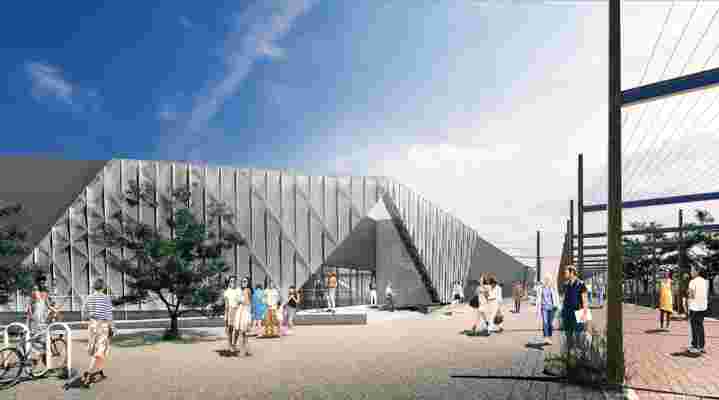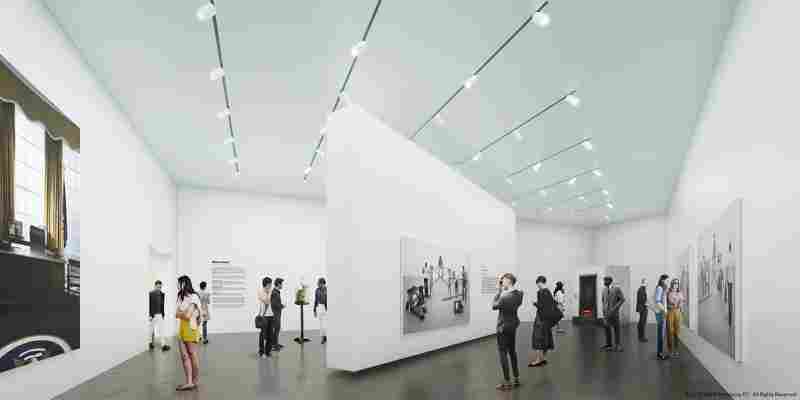March 22,2024
SITE Sante Fe Plans a Bold Expansion
by David Stewart
The rather unremarkable brown-stucco box housing one of the country’s most cutting-edge art spaces, SITE Santa Fe, is about to undergo a radical transformation. Known for its smart international biennials as well as its prestigious residency program, SITE has tapped the New York architecture firm SHoP to add nearly 15,000 square feet to its current home and make some crucial infrastructure improvements. The existing space, founded 20 years ago in an old Coors warehouse renovated by Richard Gluckman, is a focal point of the city’s once-derelict Railyard district, but despite the industrial setting, the building always had more of a pueblo-revival feel with its low-slung adobe-type aesthetic.
While the structure has undergone some minor changes over the years, SHoP’s expansion, lead by the firm’s Ayumi Sugiyama, is set to bring some serious architectural clout to the institution and the city. (SHoP is also working on Uber’s new headquarters in San Francisco, among other high-profile projects.) In addition to increasing space for exhibitions and education programs and installing a new auditorium, SHoP is transforming the building’s unremarkable entrance into a formidable, angular prowlike form and wrapping much of the façade with a perforated aluminum sheath cleverly designed to merge the geometric patterns of Navajo blankets and the texture of the corrugated metal railcars that regularly pass by SITE on adjacent tracks. The perforations, meanwhile, will make use of the dramatic sun and shade of the high desert. Not all the stucco is disappearing: The back of the building will retain a bit of that original desert look, but the earthy pueblo-brown is becoming an industrial gray. The plan is to have a new artist create a mural on the wall with each edition of the SITE Santa Fe Biennial.

Secondary entrance and event porch, seen from Santa Fe Railyard Park.
The most radical change, however, might be inside. “Five years ago we really started thinking about the limitations of the building,” says SITE director and chief curator Irene Hofmann. One problem is a lack of temperature and climate control—a serious issue in the middle of the desert, where dramatic changes in temperature and humidity are the norm. The new exhibition space will be outfitted with both HVAC and swamp coolers (which regulate humidity) to stabilize the environment. “It means we can now show a lot of art that we had not been able to bring here,” she says. Hofmann also points out that in the past, since the building had only one exhibition space, SITE had to close the gallery to visitors during the month of June—prime Santa Fe time—while installing the biennial. The addition of a 1,800-square foot SITE Lab, dedicated to rotating shows, will change that.

SITE Lab.
Construction is scheduled to break ground in August 2016, shortly after the next biennial, “SITElines: New Perspectives on Art of the Americas,” launches. The new building is expected to open in the fall of 2017.






